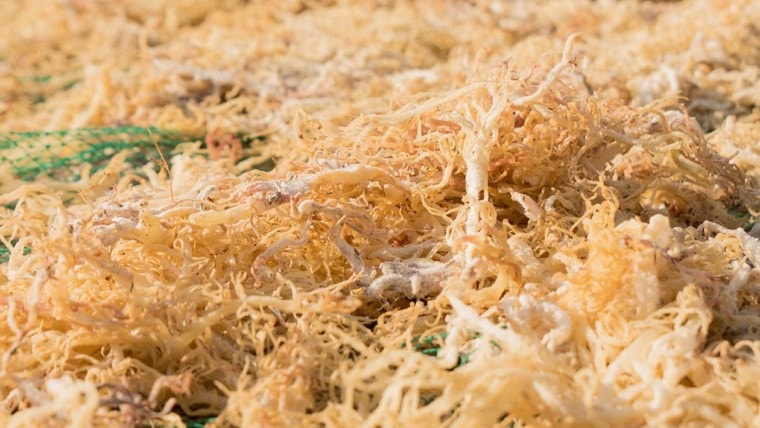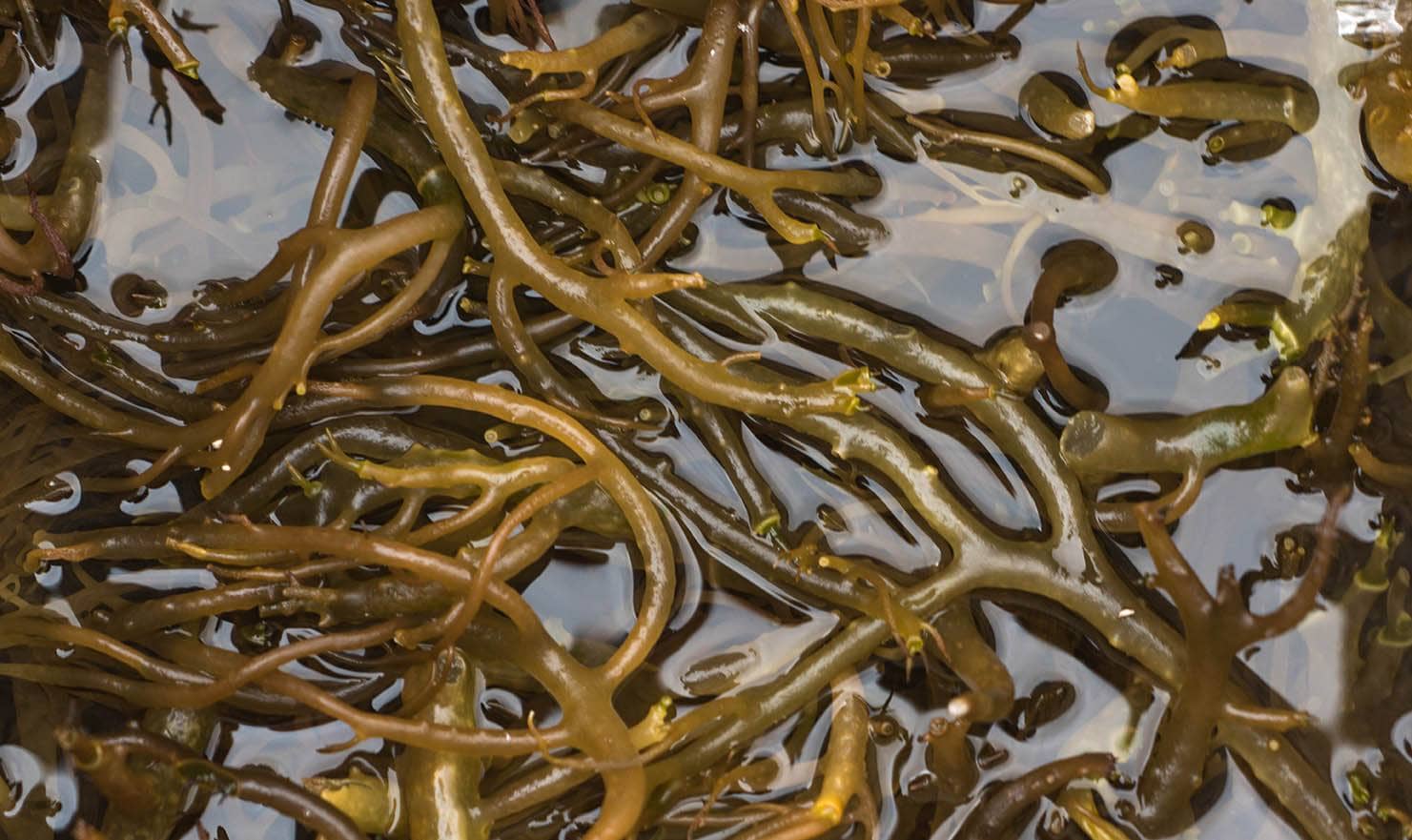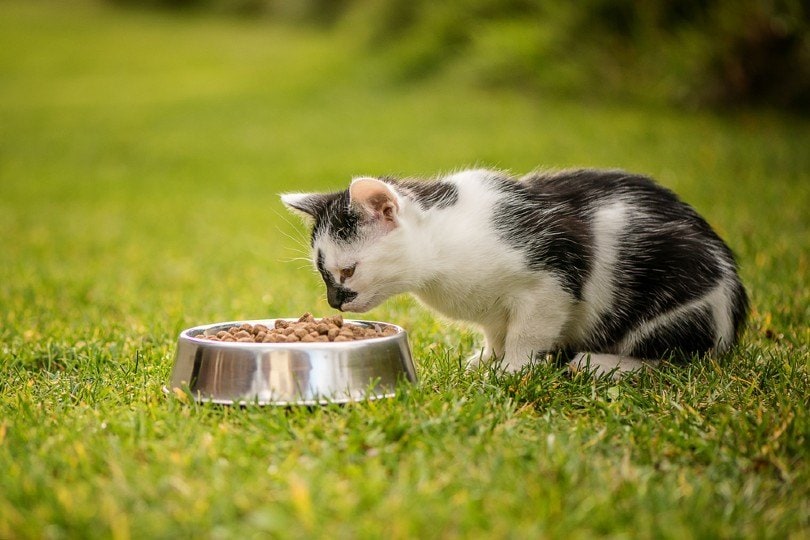
Carrageenan is a common ingredient used in many brands of cat food. If you’re unsure of the benefits and risks of this particular ingredient, you may want to know more about it before you decide if it’s something that you’re happy for your cat to eat or if you would rather avoid it.
What Is Carrageenan?

Carrageenan is derived from a species of edible red seaweed and is extracted using a chemical solvent. It’s used to thicken and bind food, both for humans and pets. In cat food, it’s most often found in wet foods.
There are two different types of carrageenan:
Undegraded carrageenan is listed as safe for human and animal consumption. Degraded carrageenan occurs when carrageenan reaches high acidities and temperatures. The molecules then break down into smaller chains. This type of carrageenan is also known as poligeenan. It’s not considered safe for human or animal consumption.
You may also see carrageenan listed on an ingredients list as:
There are many other names that carrageenan could be listed as, all of which you can find here. As more cat owners become aware of the potential risks surrounding this ingredient, some manufacturers may change the name on their ingredient labels.

Risks of Carrageenan
There are several risks with carrageenan that make it worth carefully considering if you want to feed this ingredient to your cat and yourself.
In 1982, the International Agency for Research on Cancer listed degraded carrageenan as a “possible human carcinogen.” The key words here are “degraded” and “possible.” It’s not been decided if degraded carrageenan is definitely a carcinogen. Food manufacturers also state that degraded carrageenan is never used in the production of pet food.
In 2012, a report was published by The Cornucopia Institute, with the conclusion that even food-grade undegraded carrageenan has the potential to cause ulcerations, gastrointestinal inflammation, intestinal lesions, and potentially tumors.
It’s thought that stomach acid may cause undegraded carrageenan to start to break down or degrade as it’s being digested. This means it may cause the same negative effects as degraded carrageenan, which is not deemed safe for consumption.
Cats exposed to carrageenan over extended periods of time may suffer from prolonged inflammation of the digestive system, which can cause more serious diseases to develop over time. In humans, this can include inflammatory bowel disease, arteriosclerosis, and rheumatoid arthritis. It’s possible that the same is true for cats.
In 2016, the National Organic Standards Board recommended dropping carrageenan from its list of approved ingredients. The USDA overruled this recommendation, in part due to the fact that no other natural substitute for carrageenan is available.
Benefits of Carrageenan
Food-grade carrageenan, or undegraded carrageenan, is listed on the Food and Drug Administration website under the “Generally Recognized as Safe” category. The Association of American Feed Control Officials, which monitors the production of pet food in the U.S.A., lists it as an ingredient that’s safe for use as a stabilizer, thickener, and emulsifier.
Carrageenan doesn’t provide any nutritional benefits for your cat, but it does make their food slightly more palatable by adding thickness to gravies and helping food stay correctly blended and mixed.
Pet parents are faced with a few challenges when it comes to selecting new food and water bowls for their feline companions. The Hepper NomNom Cat Bowl combines cat-friendly features, such as shallow bowls and slight elevation that promote whisker relief, good posture, and digestion, with a beautiful modern design geared to keep floors free of mess during meal time. This bowl is entirely dishwasher safe, making life as a pet parent as simple as possible. Click here to learn why the Hepper NomNom Cat Bowl is right for you and your cat.
At Pet Keen, we’ve admired Hepper for many years and decided to take a controlling ownership interest so that we could benefit from the outstanding designs of this cool cat company!
Should You Avoid Carrageenan in Cat Food?
Given the potential risks of carrageenan in cat food, it’s understandable if you would prefer to avoid feeding it to your cat. Bear in mind, though, that it is an acceptable ingredient by various health organizations and is found in many different brands of wet cat food. For carrageenan-free options, though, consider these wet cat foods:
If your cat has been suffering from any type of inflammatory issues with their digestive system, it may be worth avoiding having carrageenan in their diet for at least a month and monitoring them to see if their signs appear to improve.
Carrageenan doesn’t provide any nutritional benefits for your cat, so it’s an ingredient that you can safely drop without any concerns for their health and welfare.
More cat reads:
- Can Dry Food Cause Diabetes in Cats? Vet-Approved Facts & FAQs
- 14 Best Cat Food Bowls – Reviews & Top Picks
- How Long Do Cats Live? Average & Maximum Life Expectancy
Featured Image Credit: Glenda Esperida, Shutterstock







